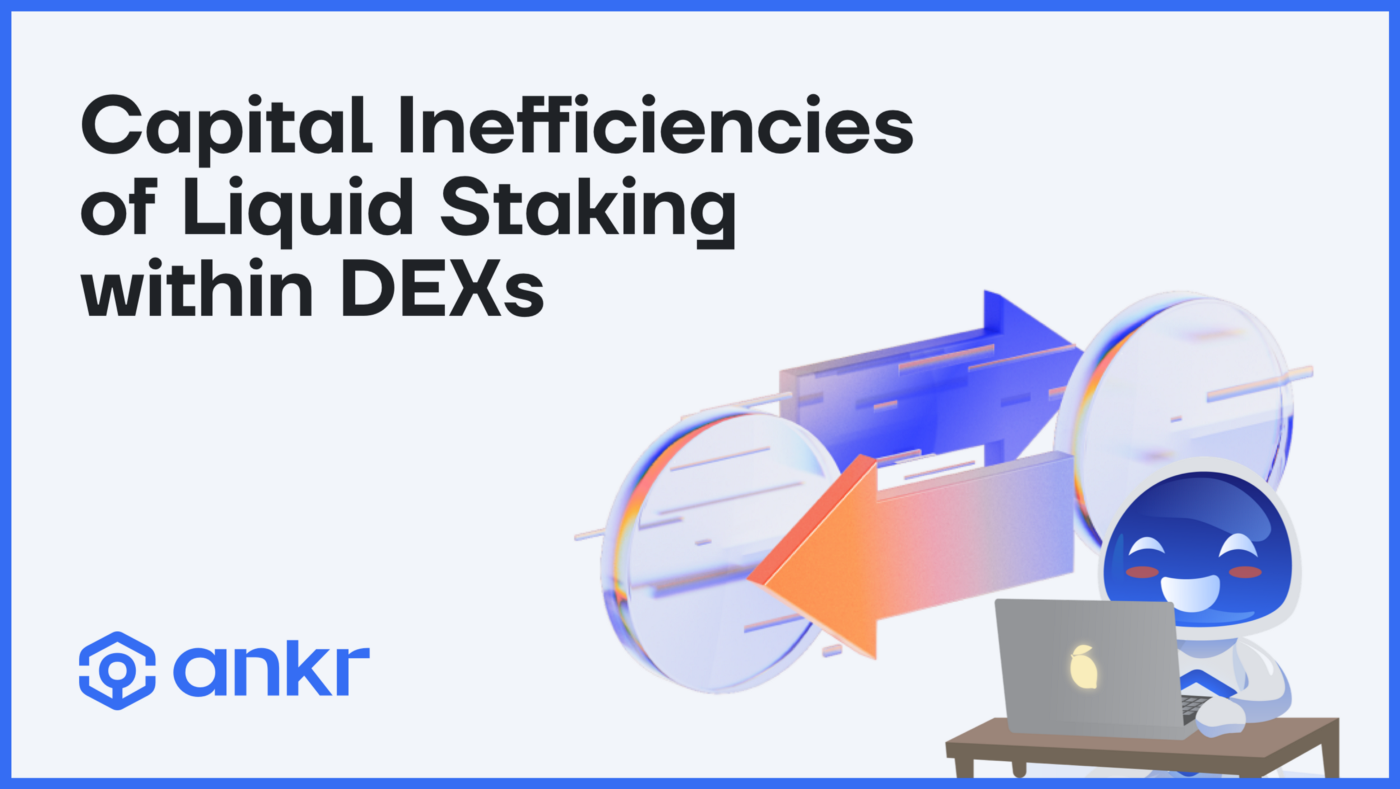Why Depositing Liquid Staked Tokens in Liquidity Pools Doesn’t Add Up

Ethan Nelson
October 28, 2022
4 min read

The better the capital efficiency of an investment, the more utilizable capital you obtain from it. Consider this: if you invest $1,000 in a Fortune 500 company, that money is capital inefficient since it is locked up in the stock and can only be used in one way: selling it. Similarly, when you stake your assets on a PoS blockchain, those assets become locked up and capital inefficient. Furthermore, staking Ethereum, in particular, is massively capital inefficient since your assets are not only locked but are held indefinitely until the entire proof of stake merging occurs.
Liquid staking emerged as a solution with the fundamental value proposition of allowing capital efficiency on staked assets. It implies that you may stake a token like BNB and obtain a liquid staked token equal to the value of your original staked assets using protocols like Ankr Staking. As a result, you may now use those staked assets in additional DeFi strategies, making it capital efficient once again. When you wish to cash out, you start the unbonding period on Ankr Staking and wait for your original assets + staking winnings to arrive.
What Is the Importance of Capital Efficiency?
The ability to access previously locked money gives new options to deploy capital and enhance return.
Furthermore, you may now stake your assets without the inconvenience of establishing a node or the whole cash necessary to maintain a node. This leveled the playing field of possibilities!
It also gives you more freedom and flexibility to use your cash wisely, leading to improved decision-making for investors. The majority of protocols require you to wait a specific amount of time before you may access your tokens if you want to unstake them. However, with liquid staking, you may simply sell your liquid-staked tokens on the market and have immediate access to your cash. Furthermore, you may distribute your staked tokens via different DeFi protocols to increase your return, whether you provide liquidity or lend your tokens to others.
Liquid Staking additionally expands DeFi's technical possibilities. It enhances the DeFi ecosystem as a whole, offering additional liquidity, connecting communities together, and making them more efficient via new listings on DEXs, new loan markets, or new arbitrage possibilities.
Liquidity Pools' Capital Inefficiencies
With that stated, we can see how the fundamental benefit of liquid staking is the capital efficiency gained even when your assets are staked. The last thing we want to do is lock up the assets in quest of higher income. One of the key disadvantages of liquidity pools is that capital efficiency is lost. Above all, you can't use it; your assets are once again locked.
As a result, we can observe that liquidity pools inside DEXs have more underlying concerns than first seems.
The use of Liquid Staked Tokens in LPs reduces overall rewards. Remember that the major motive for yield farming inside liquidity pools is to earn transaction fees from the pool. As a result, the best LP combination would be two assets that are tied to each other, such as USDC/DAI or wBTC/BTC. However, liquid-staked tokens, such as aETHb, are reward-earning and rise in value over time as a consequence of incentives.
The main problem is that having a liquidity pool with an asset and its liquid-staked derivative has a number of drawbacks. Consider this: in order to provide money into a liquidity pool, you must deposit two assets of equal value. You might, for example, provide aETHb and ETH. But, since aETHb already receives rewards and ETH does not, you'd earn more return by transferring all of your available assets into aETHb rather than distributing it evenly between aETHB and ETH for the purpose of the liquidity pool.
Furthermore, the liquid staked derivative (ie, aETHb) grows in value and is hence liable to Impermanent Loss. To summarize, the liquidity pool transaction fee incentives do not compensate for the opportunity cost of just staking half of your assets and the temporary loss from the reward-bearing nature of liquid-staked derivatives.
Conclusion
Finally, liquidity pools are dangerous, and we would not encourage placing liquid staked tokens into them since it reduces staking profits due to temporary loss and makes your recently capital-efficient assets inefficient again.



